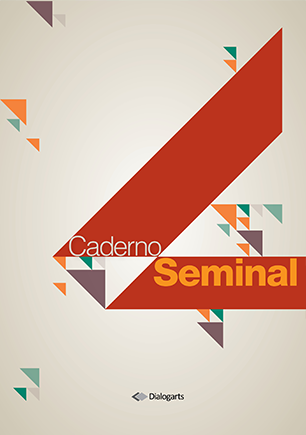LA NUEVA NARRATIVA LATINOAMERICANA DEL ANTROPOCENO: SIMPOIESIS EN EL CUENTO “SINCRONÍA DEL TACTO”, DE GABRIELA DAMIÁN MIRAVETE
Conteúdo do artigo principal
Resumo
This academic endeavor focuses on analyzing the short story "Synchronicity of Touch" by Gabriela Damián Miravete as one of the new Latin American narratives within the framework of the Anthropocene. The analysis draws on Donna Haraway's notion of sympoiesis and Stacy Alaimo's concepts of transcorporeality and intra-activity. Through a critique of autopoiesis and the vindication of sympoiesis, the story outlines an alternative narrative that challenges modern temporal linearity and human supremacism. Damián Miravete's tale portrays ways to fracture modernity, undermining the limits and boundaries imposed by the human-nature binary. These forms reveal the ever-present agencies of nature as well as the ecosystemic web, understood as interdependent. For this analysis and reflection, I will focus on the main character of the story, who undergoes processes of sympoiesis, transcorporeality, and intra-activity. This character seeks to reconnect with their natural state and to reconsider kinship through the cracks that trigger sudden memories, provoked by the trauma of humanity's detachment from nature. The story presents processes of transcorporeality that reveal the interconnectedness between human beings and nature (ecosystems, organisms, microorganisms, etc.).
Downloads
Detalhes do artigo
Ao submeter seus manuscritos para publicação em nossos periódicos, os autores concordam com os seguintes termos:
a. Autores mantêm os direitos autorais e concedem à revista o direito de primeira publicação, com o trabalho simultaneamente licenciado sob a Creative Commons Attribution License, que permite o compartilhamento do trabalho com reconhecimento de sua autoria e da publicação inicial neste periódico.
b. Autores têm autorização para assumir contratos adicionais separadamente, para distribuição não exclusiva da versão do trabalho publicada neste periódico (ex.: publicar em repositório institucional ou como capítulo de livro), com reconhecimento de sua autoria e da publicação inicial neste periódico.
c. Autores têm permissão e são estimulados a publicar e distribuir seu trabalho online (ex.: em repositórios institucionais ou na sua página pessoal) antes ou durante o processo editorial, já que isso pode gerar alterações produtivas, bem como aumentar o impacto e a citação do trabalho publicado.

